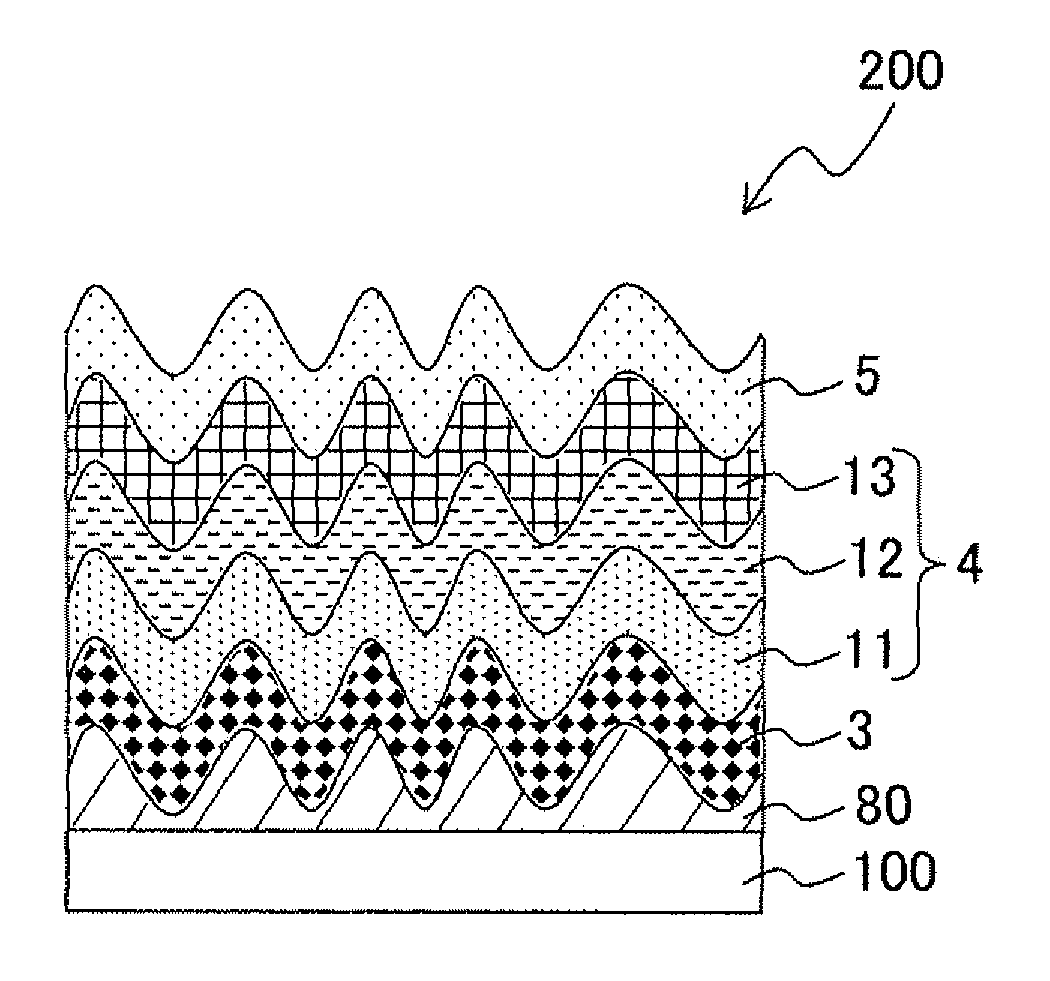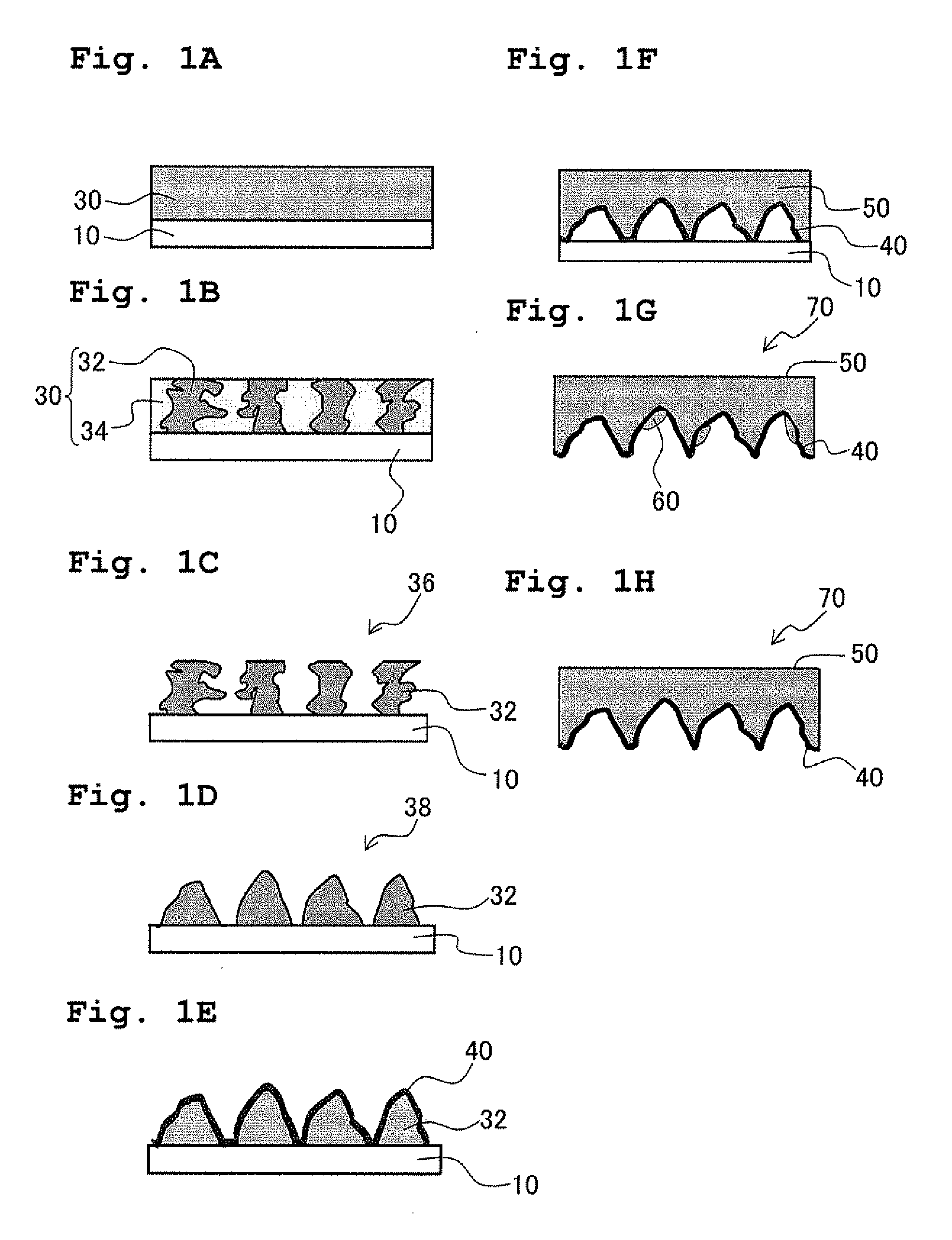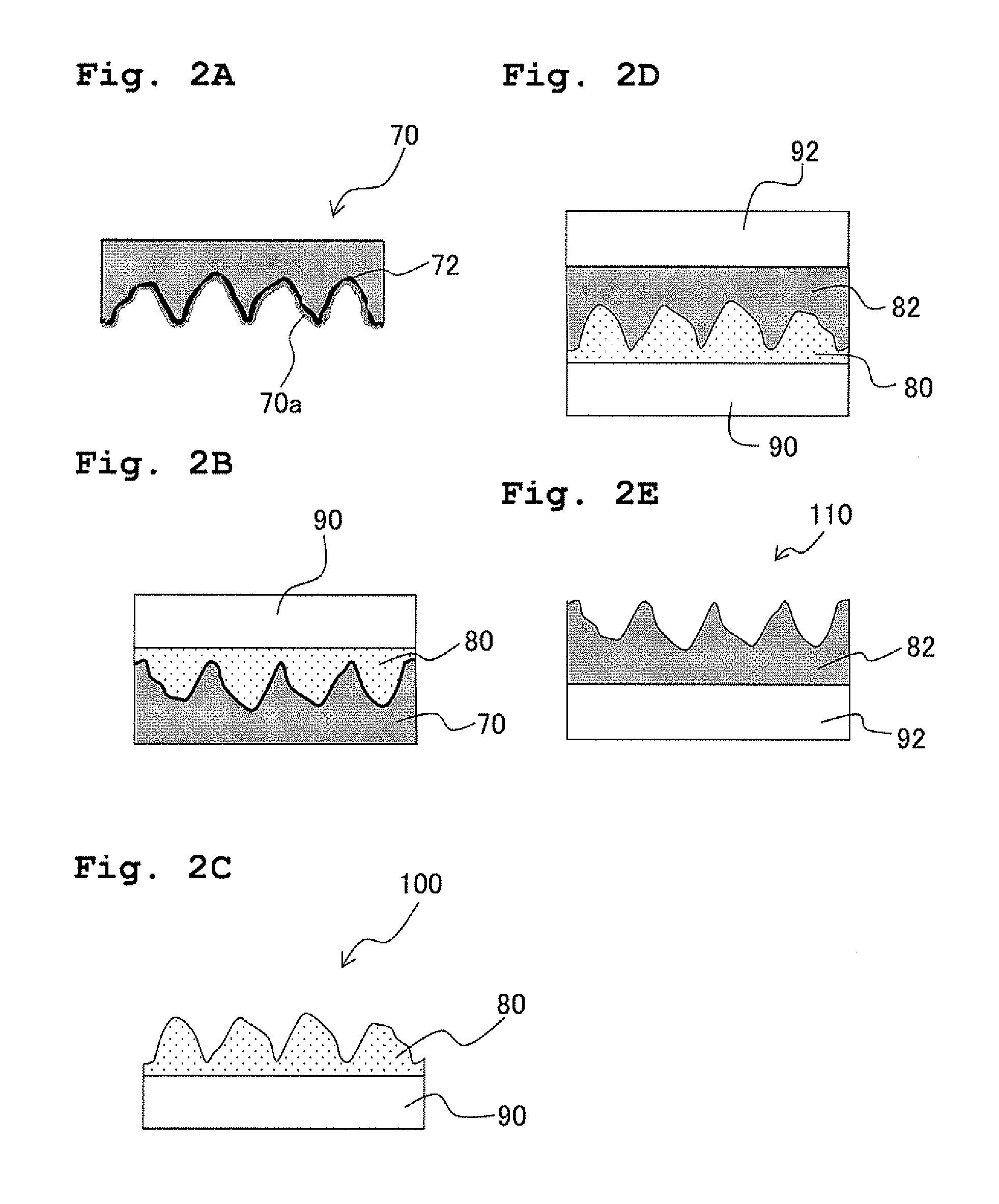Method for producing mold for minute pattern transfer, method for producing diffraction grating using the same, and method for producing organic el element including the diffraction grating
a technology of diffraction grating and mold, which is applied in the direction of diffraction grating, thermoelectric device junction materials, dough embossing machines, etc., can solve the problems of difficult development difficulty in technical and economic aspects, and high cost of light sources having short wavelengths. , to achieve the effect of improving the peeling property of molds, reducing mold contamination, and high mechanical strength
- Summary
- Abstract
- Description
- Claims
- Application Information
AI Technical Summary
Benefits of technology
Problems solved by technology
Method used
Image
Examples
example 1
[0167]Toluene was added to 150 mg of the block copolymer 1 and 38 mg of Polyethylene Glycol 4000 manufactured by Tokyo Chemical Industry Co., Ltd. (Mw=3000, Mw / Mn=1.10) as polyethylene oxide so that the total amount thereof was 10 g, followed by dissolving them. Then, the solution was filtrated or filtered through a membrane filter having a pore diameter of 0.5 μm to obtain a block copolymer solution. The obtained block copolymer solution was applied, on a polyphenylene sulfide film (TORELINA manufactured by TORAY INDUSTRIRES, INC.) as a base member, in a film thickness of 200 to 250 nm, by a spin coating. The spin coating was performed at a spin speed of 500 rpm for 10 seconds, and then performed at a spin speed of 800 rpm for 30 seconds. The thin film applied by the spin coating was left at a room temperature for 10 minutes until the thin film was dried.
[0168]Subsequently, the base member on which the thin film was formed was heated for 5 hours in an oven of 170 degrees Celsius (f...
example 2
[0190]Toluene was added to 120 mg of the block copolymer 2 and 30 mg of Polyethylene Glycol 4000 manufactured by Tokyo Chemical Industry Co., Ltd. so that the total amount thereof was 10 g, followed by dissolving them. Then, it was filtrated or filtered through a membrane filter having a pore diameter of 0.5 vim to obtain a block copolymer solution.
[0191]Subsequently, 0.7 g of octadecyldimethylchlorosilane (ODS) was added to 500 ml of heptane, followed by being stirred to prepare 2.0 mM of ODS solution. A glass substrate after cleaning having a thickness of 1.1 mm was immersed in the solution and stationarily placed for 24 hours. This processed substrate was subjected to ultrasonic cleaning with chloroform for 10 minutes and then subjected to ultrasonic cleaning with pure water for 10 minutes, followed by being dried. Accordingly, an ODS-processed glass substrate was obtained.
[0192]The obtained block copolymer solution was applied, on the ODS-processed glass substrate, in a film thi...
example 3
[0206]Toluene was added to 120 mg of the block copolymer 2 and 30 mg of Polyethylene Glycol 4000 manufactured by Tokyo Chemical Industry Co., Ltd. so that the total amount thereof was 10 g, followed by dissolving them. Then, it was filtrated or filtered through a membrane filter having a pore diameter of 0.5 μm to obtain a block copolymer solution.
[0207]Subsequently, 170 mg of methyltrimethoxysilane (MTMS) and 89 mg of 1,2-bis(trimethoxysilyl)ethane (BTMSE) were added to 4.75 g of methylisobutylketone, followed by being stirred to prepare methyltrimethoxysilane / 1,2-bis(trimethoxysilyl)ethane solution. This solution was applied on a glass substrate after cleaning having a thickness of 1.1 mm by a spin coating to obtain a glass substrate with a coating film made of methyltrimethoxysilane / 1,2-bis(trimethoxysilyl)ethane. The spin coating was performed at a spin speed of 500 rpm for 10 seconds, and then performed at a spin speed of 800 rpm for 30 seconds. The glass substrate with the coa...
PUM
| Property | Measurement | Unit |
|---|---|---|
| Temperature | aaaaa | aaaaa |
| Time | aaaaa | aaaaa |
| Pressure | aaaaa | aaaaa |
Abstract
Description
Claims
Application Information
 Login to View More
Login to View More - R&D
- Intellectual Property
- Life Sciences
- Materials
- Tech Scout
- Unparalleled Data Quality
- Higher Quality Content
- 60% Fewer Hallucinations
Browse by: Latest US Patents, China's latest patents, Technical Efficacy Thesaurus, Application Domain, Technology Topic, Popular Technical Reports.
© 2025 PatSnap. All rights reserved.Legal|Privacy policy|Modern Slavery Act Transparency Statement|Sitemap|About US| Contact US: help@patsnap.com



